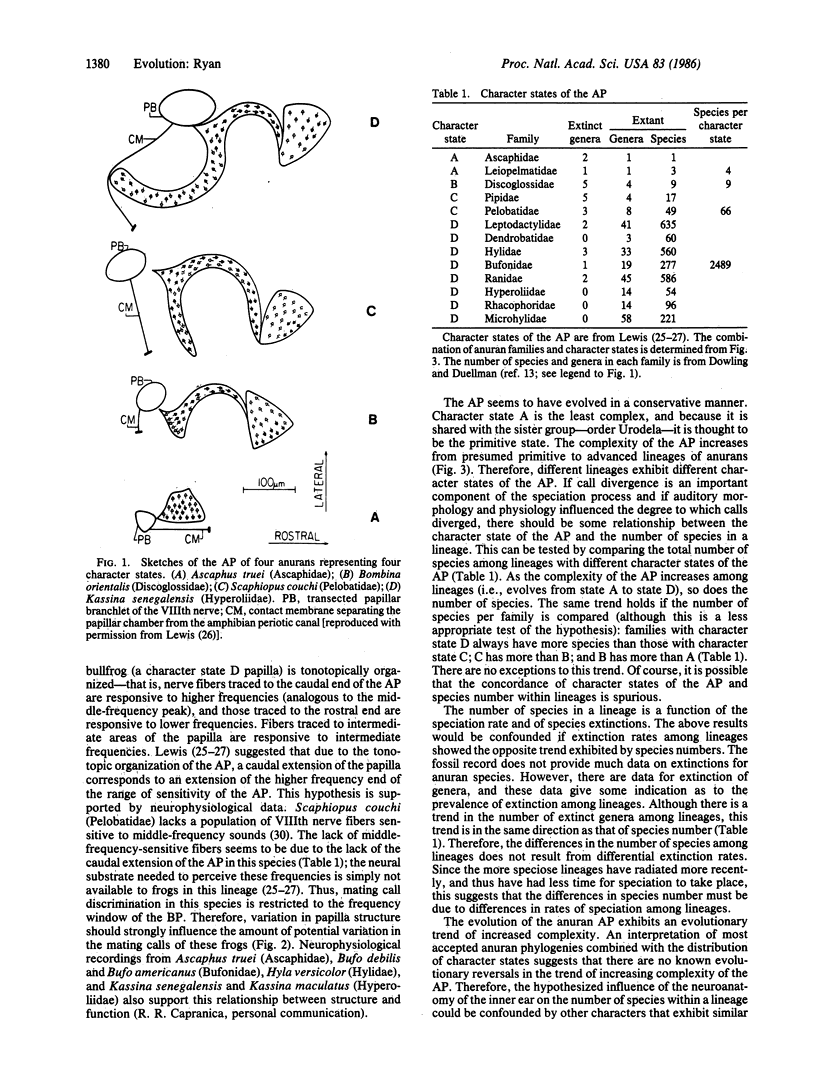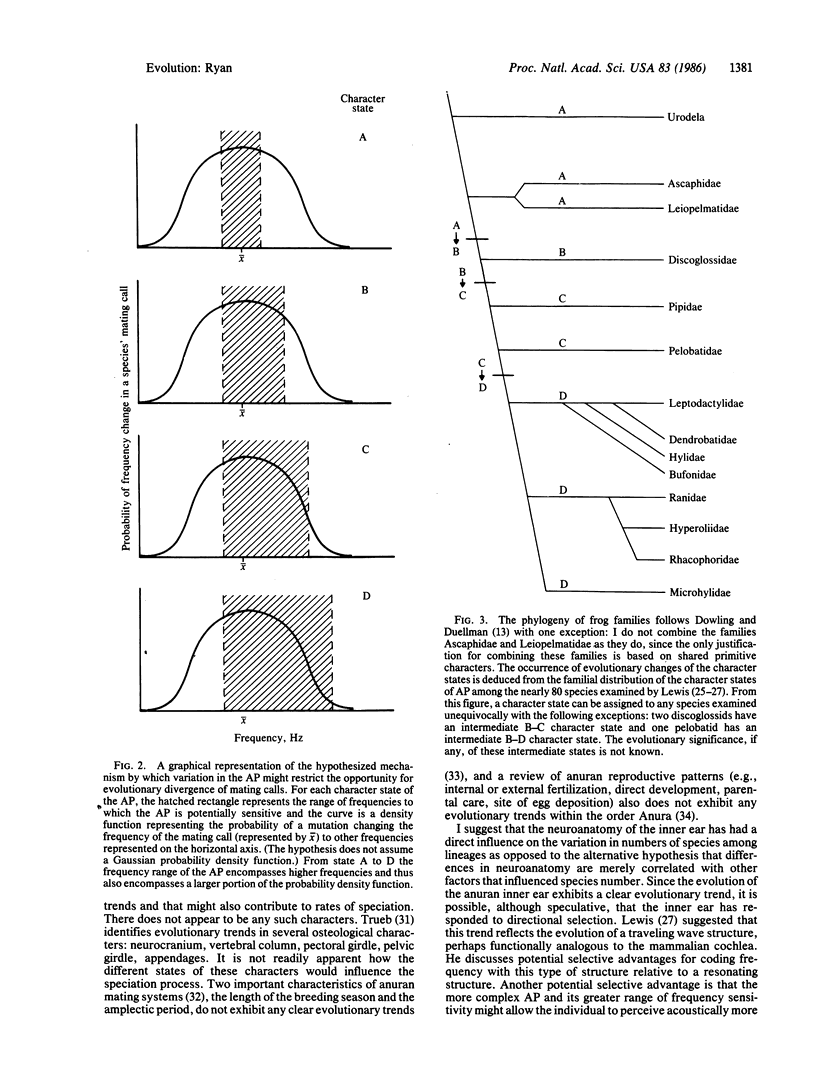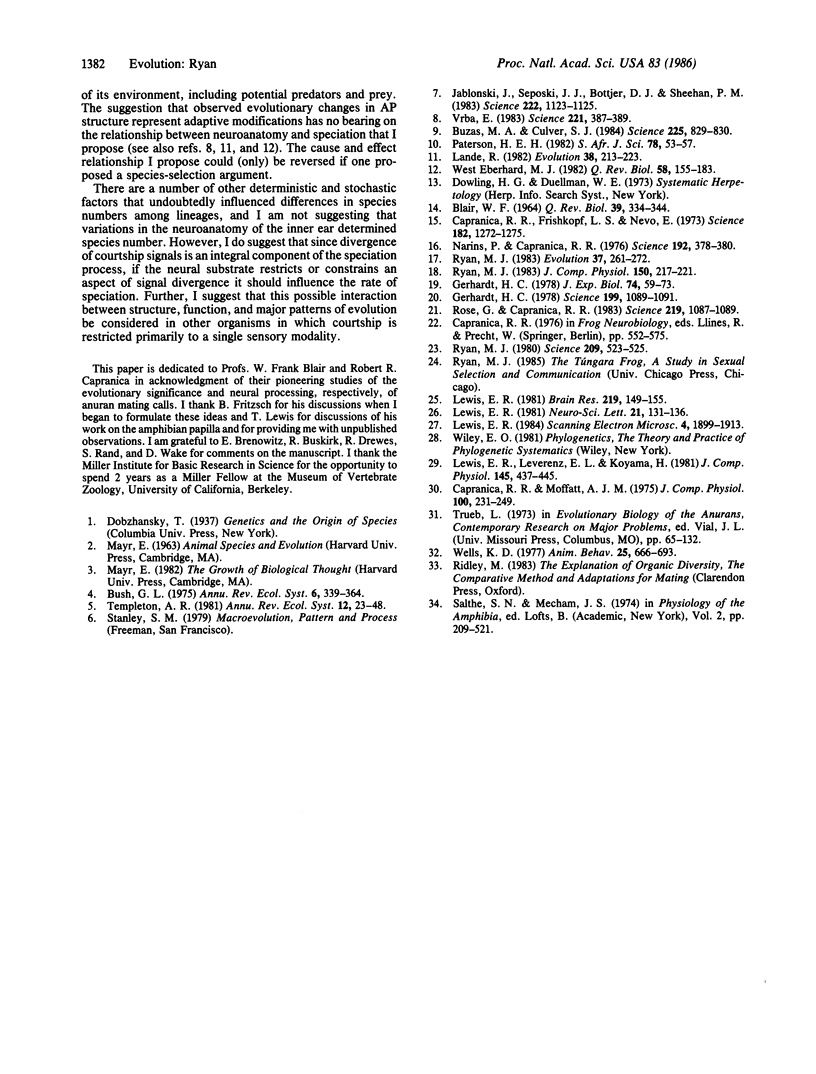Abstract
Evolutionary divergence among animal courtship signals is an important component of the speciation process. In anurans, the preferential response of females to the mating call of conspecific males often maintains reproductive isolation among populations. Much of the information in the call is initially processed in the inner ear, and there is considerable variation in the structure of this organ among lineages of frogs. This variation is responsible for differences in the frequency range to which frog species are sensitive and thus influences the frequency range over which mating calls can effectively diverge. Data suggest that this influence of neuroanatomy on mating call divergence is partly responsible for the different rates of speciation among lineages of frogs.
Keywords: amphibian papilla, auditory neurobiology, macroevolution, mate recognition
Full text
PDF



Selected References
These references are in PubMed. This may not be the complete list of references from this article.
- BLAIR W. F. ISOLATING MECHANISMS AND INTERSPECIES INTERACTIONS IN ANURAN AMPHIBIANS. Q Rev Biol. 1964 Dec;39:334–344. doi: 10.1086/404324. [DOI] [PubMed] [Google Scholar]
- Buzas M. A., Culver S. J. Species duration and evolution: benthic foraminifera on the atlantic continental margin of north america. Science. 1984 Aug 24;225(4664):829–830. doi: 10.1126/science.225.4664.829. [DOI] [PubMed] [Google Scholar]
- Capranica R. R., Frishkopf L. S., Nevo E. Encoding of geographic dialects in the auditory system of the cricket frog. Science. 1973 Dec 21;182(4118):1272–1275. doi: 10.1126/science.182.4118.1272. [DOI] [PubMed] [Google Scholar]
- Gerhardt H. C. Discrimination of intermediate sounds in a synthetic call continuum by female green tree frogs. Science. 1978 Mar 10;199(4333):1089–1091. doi: 10.1126/science.628833. [DOI] [PubMed] [Google Scholar]
- Jablonski D., Sepkoski J. J., Jr, Bottjer D. J., Sheehan P. M. Onshore-offshore patterns in the evolution of phanerozoic shelf communities. Science. 1983 Dec 9;222(4628):1123–1125. doi: 10.1126/science.222.4628.1123. [DOI] [PubMed] [Google Scholar]
- Lewis E. R. Evolution of inner-ear auditory apparatus in the frog. Brain Res. 1981 Aug 24;219(1):149–155. doi: 10.1016/0006-8993(81)90274-2. [DOI] [PubMed] [Google Scholar]
- Lewis E. R. On the frog amphibian papilla. Scan Electron Microsc. 1984;(Pt 4):1899–1913. [PubMed] [Google Scholar]
- Narins P. M., Capranica R. R. Sexual differences in the auditory system of the tree frog Eleutherodactylus coqui. Science. 1976 Apr 23;192(4237):378–380. doi: 10.1126/science.1257772. [DOI] [PubMed] [Google Scholar]
- Rose G., Capranica R. R. Temporal selectivity in the central auditory system of the leopard frog. Science. 1983 Mar 4;219(4588):1087–1089. doi: 10.1126/science.6600522. [DOI] [PubMed] [Google Scholar]
- Ryan M. J. Female mate choice in a neotropical frog. Science. 1980 Jul 25;209(4455):523–525. doi: 10.1126/science.209.4455.523. [DOI] [PubMed] [Google Scholar]
- Vrba E. S. Macroevolutionary trends: new perspectives on the roles of adaptation and incidental effect. Science. 1983 Jul 22;221(4608):387–389. doi: 10.1126/science.221.4608.387. [DOI] [PubMed] [Google Scholar]


